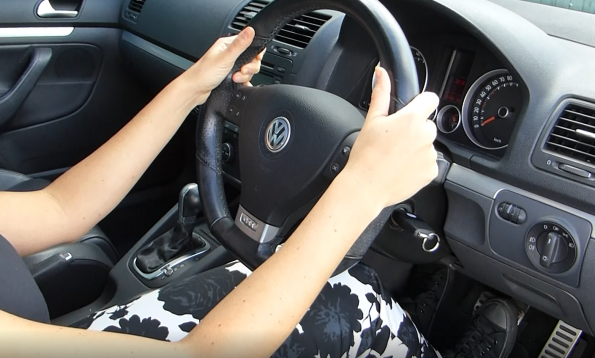When you rate your own driving, you’re likely to think that you are better than you are because you’ll judge yourself on your criteria. It leads to well over 50% of people thinking they are above average drivers (something statistically impossible, seeing as it should be 50%), and also the phenomenon of illusory superiority.
Even if you rate yourself in the top 10%, there’s still room for improvement. If you’ve not had any input into your driving for a while (except the odd speeding fine or being chastised by your spouse), then it might be time for a tune-up.
Back to basics
Due to the forgetting curve, after a couple of days, we’ve forgotten the majority of what we learned. We can only retain information by repeatedly reminding ourselves of it. Your driving instructor will have told you a multitude of things, but you will have forgotten a lot of them and, unless you’ve had advanced driver training in the interim, you’ve now just settled into your own way of doing things.
You can easily get a tune-up, though. Search on Google for a driving instructor near you, e.g. ‘driving instructor in Melbourne’, ‘driver training in Toronto’ or ‘Driving Schools East London‘. This way, you’ll get a list of people in your region.
Make sure you choose a driving instructor that you feel comfortable with.
If you’re an experienced driver, one lesson is all it should take if you are open to suggestions. If you’re stubborn, it’ll take more. Of course, you have to apply the things you learn and it might take some time to break the habits you’ve developed.
Work on your bad habits
A few bad habits you might want to iron out are:
- Tailgating – following too close to the vehicle in front
- Turning your head to talk to your passengers (especially if they’re in the back seat!)
- Being distracted by your phone
- Using inappropriate speed
- Driving tired
- Driving with one hand on the wheel
- Not looking far enough ahead
- Constantly accelerating or braking when you could maintain a steady speed
If you can avoid doing these then you’ll use less fuel and you’ll have less accident risk. It could take a concerted effort to completely eliminate all of them from your driving.
Get your car set up
Are you setting your mirrors so that your blind spots are minimised? You should barely see any of your car in the wing mirrors, otherwise you’re creating blind spots.
Is your seat set up correctly? Your wrists should rest on the top of the steering wheel when your arms are straight. You shouldn’t be slouched too far back, but your face shouldn’t be too close to the steering wheel (bad if the airbag goes off).

Have you connected your phone to Bluetooth (if your car has it)? This will enable you to control your media and phone hands-free (if you’re allowed to talk on the phone in your country).
Are your headlights set correctly – some cars allow you to adjust the angle of the headlights.
Are your dashboard lights set correctly – most cars allow you to dim the dashboard lights at night which can help reduce eye strain.
Is your car running well. A noisy, bumpy car will create more fatigue than a smooth, quiet car.
Refresh your knowledge
Hopefully, you’ll remember what we said above about the forgetting curve. Road rules change occasionally and you might forget what some signs and road markings mean. There’s no harm in doing a free road rules test on this site to check your level of knowledge.
People commonly indicate incorrectly on roundabouts, causing confusion to other drivers.
You could also join the Institute of Advanced Motorists and get some advanced training. There are videos on YouTube of advanced driving (look up ‘commentary driving’) and you can study the book Roadcraft which a great many emergency services drivers read and put into practice.
Check your health
It will be impossible to be the best driver you can be unless you address any underlying health issues.
Check your eyesight and get the right prescription lenses if you need them. Our eyesight decays as we get older. Using digital devices accelerates myopia (short-sightedness). If you find yourself squinting to see road signs, you might need glasses for driving.
Deal with any issues around hypertension and stress so that you’re not distracted when driving.
Choose a low-sugar diet to maintain your alertness.
